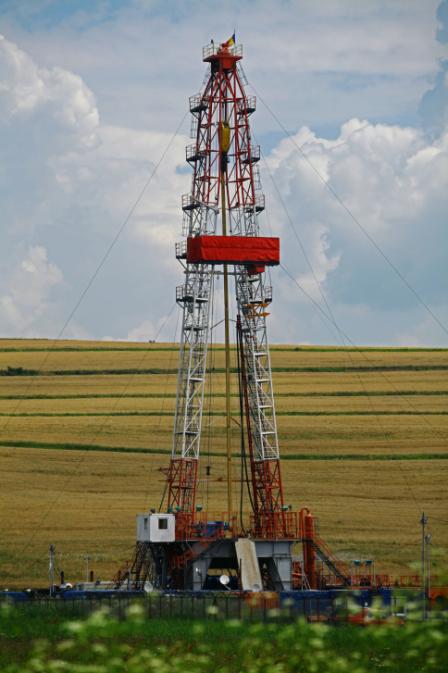Unconventional Oil and Gas Extraction Effluent Guidelines
 EPA has established pretreatment standards for the Oil and Gas Extraction Category (40 CFR Part 435). The standards prohibit discharges of wastewater pollutants from onshore unconventional oil and gas (UOG) extraction facilities to publicly owned treatment works
EPA has established pretreatment standards for the Oil and Gas Extraction Category (40 CFR Part 435). The standards prohibit discharges of wastewater pollutants from onshore unconventional oil and gas (UOG) extraction facilities to publicly owned treatment works- Background
- Extraction Process
- Compliance Date Extension
- Documents
- Additional Resources
- Additional Information
Background
UOG extraction wastewater can be generated in large quantities and contain constituents that are potentially harmful to human health and the environment. Wastewater from UOG wells often contains high concentrations of salt content, also called total dissolved solids (TDS). The wastewater can also contain various organic chemicals, inorganic chemicals, metals, and naturally-occurring radioactive materials (also referred to as technologically enhanced naturally occurring radioactive material or TENORM). This potentially harmful wastewater creates a need for appropriate wastewater management infrastructure and practices.
- can be discharged, untreated, from the POTW to the receiving stream
- can disrupt the operation of the POTW (for example, by inhibiting biological treatment)
- can accumulate in biosolids (also called sewage sludge), limiting their use
- can facilitate the formation of harmful disinfection by-products
Based on the information reviewed as part of this rulemaking, UOG operators currently do not send wastewater to POTWs. Given this, and other factors, EPA has established a prohibition on discharges of UOG extraction wastewater pollutants to POTWs. EPA promulgated this regulation because onshore unconventional oil and gas extraction facilities have discharged to POTWs in the past, and because the potential remains that some facilities could discharge to POTWs in the future.
Extraction Process
Recent advances in the well completion process, combining hydraulic fracturing and horizontal drilling, enhanced the technological and economic feasibility of oil and gas extraction from unconventional formations (shale and/or tight formations). Hydraulic fracturing is part of the well completion process in UOG extraction in which operators inject fracturing fluids down the well to create small fractures in the rock formations. This process provides the oil and/or gas a pathway to travel to the well for extraction.
Wastewater may be generated during production, field exploration, drilling, well completion, or well treatment. The largest source of UOG extraction wastewater is produced water, which for this rule EPA defines as the fluid brought up from the hydrocarbon-bearing strata during the extraction of oil and gas, and includes, where present, formation water, injection water, and any chemicals added downhole or during the oil/water separation process. Produced water is generated initially after hydraulic fracturing (this is sometimes referred to as “flowback”) as well as during the production phase of the well (when oil and/or gas is also being produced by the well).
Coalbeds are another source of unconventional gas. Discharges from coalbed methane extraction at onshore oil and gas facilities are not subject to effluent limitations guidelines or standards under Part 435.
Compliance Date Extension
EPA is extending the implementation deadline for certain facilities subject to the June 28, 2016 final rule. This revision is in response to new information indicating that some facilities are not presently meeting the new zero discharge requirements. No other provisions of the June 28, 2016 rule are changed. For purposes of this final rule, "compliance date" and "implementation date" are used interchangeably.
- Final rule: Compliance date extension (December 7, 2016)
- Withdrawal of September 30, 2016 direct final rule (November 28, 2016)
- Direct final rule (September 30, 2016)
- Proposed rule (September 30, 2016)
Documents
- Final rule: Federal Register Notice (June 28, 2016)
- Support documents, including:
- Fact Sheet
- Technical Development Document
Docket
Documents related to the rulemaking can be found on EPA’s docket at regulations.gov. The Docket Number is EPA-HQ-OW-2014-0598.
Background Document
- Proposed rule: Federal Register Notice (April 7, 2015)
Additional Resources
- Related EPA Activities: Natural Gas Extraction - Hydraulic Fracturing
Additional Information
To obtain more information on the rulemaking please contact Karen Milam (milam.karen@epa.gov) at 202-566-1915.
